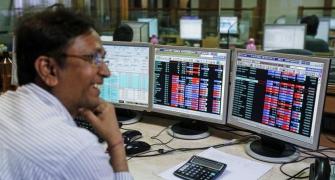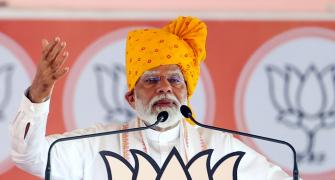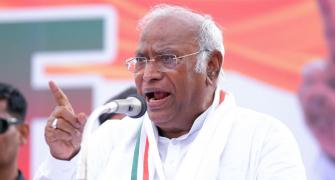An index P/E of 23 implies that the market is already discounting EPS growth at 20% or more, says Devangshu Datta.

A friend of mine, who is in the advisory business, was recently approached by a wealthy individual. That client had started trading in stocks around two years ago and lost about 60 per cent of the initial corpus. This client wanted to recover the lost money within the next two years.
My friend refused the assignment. As he pointed out, this amounted to wanting a 150 per cent return (absolute) on capital in two years and he wasn't confident he could deliver this!
In further conversation, he did, however, mention that he thought he could deliver 150 per cent returns (absolute) over four years.
That set me thinking. In compounding terms, a two-year return of 150 per cent equals a 58 per cent compound annual growth rate (CAGR), while a four-year return of 150 per cent equals 26 per cent CAGR. The index return over the past five years is about 11 per cent CAGR.
Any sort of return is possible in stock-picking. An equity investor could lose the whole corpus quickly (minus 100 per cent) or if a multi-bagger is found, the return could quickly hit 500 per cent or more.
But, “possible” is not the same thing as probable.
In terms of probability, a “sane portfolio” will usually fetch returns reasonably close to the market benchmark index. But, what is a “sane” portfolio? It is a portfolio that is not too narrow or too broad.
At one extreme, a single stock portfolio could deliver results far-distant from market benchmarks. A special case of a single stock portfolio would be of the entrepreneur who holds a large stake in his own concern.
Bill Gates for example, effectively held a single stock portfolio, Microsoft, for a few years and that made him a billionaire. It could also have led to bankruptcy if Microsoft had failed.
At the other extreme, if you bought every stock in the index, you would get close to the index return (it would depend on the weights of those stocks in your portfolio, versus the index weights). But, why would you go to such trouble when you could just buy an exchange-traded fund (ETF)?
A sane portfolio could, therefore, be anything from five-10 stocks to 20-25. A portfolio of less than five stocks could give an extreme return, while holding over 25 stocks would edge into index territory. Assuming an investor does not want extreme risk, he or she is also likely to hold a diversified basket, rather than businesses across very few sectors.
Is diversification good or bad? Some highly successful investors have avoided diversification and focused only on stocks of a certain kind. Other highly successful investors have diversified much more.
The textbook says diversification avoids risk in that the cyclical natures of different sectors cancel out. This ensures that a diversified portfolio always has a few decent performers. However, the opposite is also true - a diversified portfolio will always hold a few underperformers.
So, the “narrow” advocates suggest cutting out cyclical stocks and only looking at perennial industries (healthcare, fast-moving consumer goods (FMCG), pharmaceutical, utilities) with low cyclical tendencies. Both arguments are logical and I'd guess it depends on the individual's personal predilections. A non-diversified portfolio carries more risk and it could give more extreme returns.
So, to revert to the original question, how would you try to pick up a 26 per cent CAGR over the next four years? Since this is approximately two and a half times the historic market return, I'd guess you would have to put together a narrow portfolio which you reckoned had very high-growth potential.
It would be especially difficult to do this now because the market is highly valued. An index price to earnings (P/E) ratio of 23 implies it is already discounting earnings per share (EPS) growth at 20 per cent or more.
I’d also guess the investor would have to consider high portfolio churn to target 26 per cent. This churn would add on brokerage costs and increase the chance of underperformance.
Targeting an exact return from equity is, by definition, hard; equity is not a fixed income asset. You can look to beat other asset classes by heading into stocks. You can look to beat the equity index return as well. This puts a floor on the desired return (the floor is “floating”, since it may be benchmarked to a floating return like a T-Bill yield). But, trying to maximise equity returns is hard and it’s even harder doing it in a specific timeframe.
Photograph: PTI Photo








